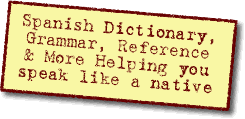|
Simply put, yes. But more can be said.
Spanish uses 'de' in various ways that English doesn't. It also employs articles where English does not.
In English, a noun can modify a noun, as in 'bus stop'. The first noun, called an adjunct in English, is the modifier. The equivalent in Spanish is to reverse the order of the nouns, pluralize the modifer, and insert 'de'.
la parada de autobuses
In English, the genitive is often constructed using back-to-back nouns and suffixing an apostrophe 's' to the first noun, the possessor. Paul's bicycle
The Spanish equivalent is 'la bicicleta de Pablo'. The nouns are reversed and 'de' is inserted.
In your first sentence, 'de' is being used yet another way - to indicate association.
el dedo del pie = the digit (dedo) of (associated with) the foot (pie) = toe
debajo de = under, below
debajo del = under the (masculine noun)
debajo de la = under the (feminine noun)
debajo de los = under the (plural masculine noun)
debajo de las = under the (plural feminine noun)
Here, 'de' is an inseparable part of the preposition that means 'under'. If you don't use two words, 'debajo' takes on another meaning.
Likewise, 'después' means 'afterwards', but 'después de' means 'after'.
después del desayuno = after breakfast
Después, fuimos al cine. = Afterwards, we went to the movies.

|


 Similar Threads
Similar Threads







